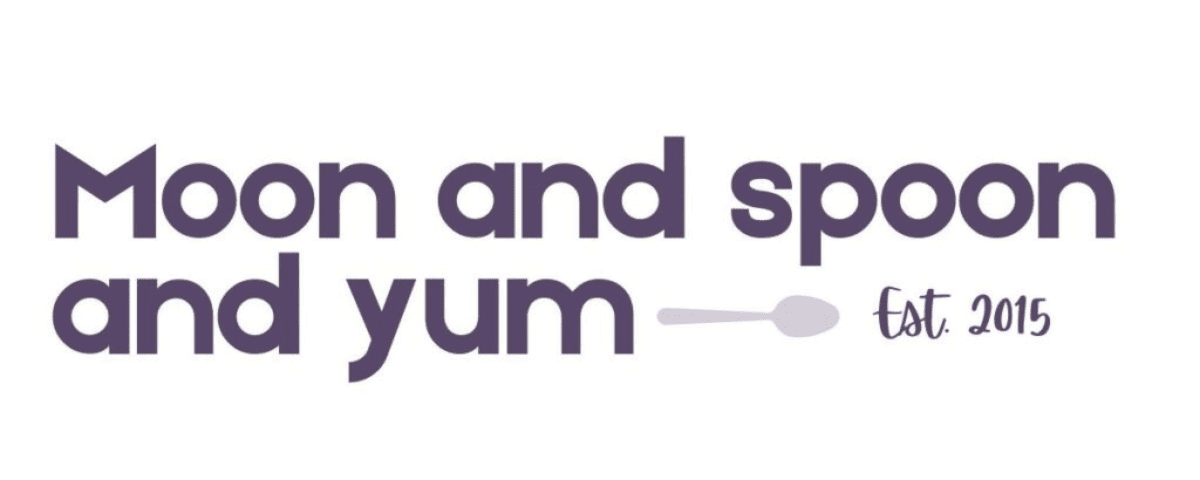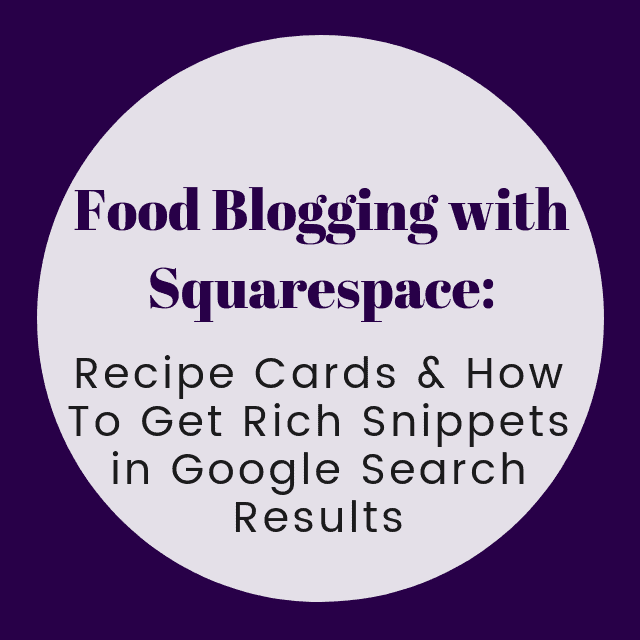If you’re a food blogger, having your recipes coded to display properly in Google Search Results as recipe ‘rich snippets’ is imperative if you want to competitively rank alongside other food bloggers. Having a recipe card displayed that is easy to print is important to readers, too. Read on for my favorite Squarespace recipe card solution, as well as my tips and tricks for getting your recipes to display and rank in Google search results (as well as Pinterest’s recipe rich pins)!
NOTE: I have since moved to WordPress. I keep this up to help others who are on the Squarespace platform. While it is possible to a have a very well-optimized food blog on Squarespace, it is a lot more work and takes a lot more time than on WordPress. It’s a personal decision as to which platform one prefers. As a busy mom, I needed to find a way to save time optimizing my posts, hence my move to WordPress. I adore Squarespace, but it just isn’t for me at this time. But for those of you sticking it through, I hope this helps! XO.
I’ve had a long journey of learning and trying various solutions to achieve the results I need as a food blogger not blogging on WordPress. Without the use of plug-ins I’ve had to find lots of workarounds, do lots of research and ask LOTS of questions among the food blogging community. I wanted to save you the arduous task and share some of what I’ve learned thus far. Read on for how I’ve implemented JSON-LD code so my recipes display as rich snippets in Google search results and in Pinterest rich pins, as well as my favorite recipe ‘card’ tips & tricks.
*My Favorite Recipe Card Solution (Unfortunately, as I last checked, Food Square is no longer operating. But, I created my own recipe card solution HERE. All of the below still applies!)
I’m a great fan of Retro Recipe’s Food Square recipe card. This card will give you both the JSON-LD code and an HTML code. The JSON-LD code is code that is placed within a code block on your post that does not show up on your page but is read by Google and is what results in recipe rich snippet results in Google. The HTML code is a code placed within a code block on your page that displays a recipe card for your readers to see and even has a built in ‘print’ button.
*An Alternative Recipe Card Solution:
If you would rather not use the Food Square recipe card, you have another option! You still will need a JSON-LD code so that your recipe will show in Google search results properly. So firstly, you will need to generate that code. I like to use Technical SEO’s Schema Markup tool. Simply select ‘Recipe’ from the drop down, fill out all required fields, and then test it using the Structured Data Tool to make sure there aren’t any errors. You then place this code anywhere within a recipe post. Keep in mind that this code will appear invisible to you, but Google will be able to read it. Now, so long as you have the JSON-LD code, you are set with Google search results and Pinterest recipe rich pins. Now all you need is the visual component for your readers. You have a few options here. You can simply type your recipe out however you would like within your blog post, or you can create your own ‘card’ using Photoshop or Canva or the like and then post that image on your page. You can get creative here. Just make sure you have that JSON-LD code! 🙂 And, do you still want a print option? Simply place and link the word ‘Print’ within your recipe simply linking it to a Google Doc file with your recipe written out simply.
*UPDATED to add: I have now created my own RECIPE CARD solution. You can find that HERE.
Do you want to speed up the process of having your rich recipe snippets display in Google search results?
Use Search Console’s URL Inspection Tool. Click ‘Request Indexing’. It can still take a few days for them to display properly, however, your recipe information should display in Pinterest’s recipe rich pins right away!
Are you looking for how to include star ratings in your posts and Google search results? Find that HERE.
And, that’s it! Sure, it may take a few extra steps, but the results are worth it! I so hope you found this helpful and I always welcome your feedback & questions (and appreciate you sharing!). xo.
Note: I am in no way affiliated with Google, Pinterest or Squarespace. I simply want to share the hard-earned knowledge I’ve acquired as I feel Squarespace food blogging resources are hard to find!


hi there, i am working on a new website, food blogging website, currently on squarespace but at the very beginning of designing it with the help of a web designer, would you recommend for me to leave SS and move to WP? how hard or easy it is to move a website from ss to wp? Thank you!!
Hi Elite – I most definitely would recommend it! Many of us who made the switch wish we would have moved sooner. Eventually you will reach a point where just can’t do what you need to do to stay competitive with other food bloggers with Squarespace (not to mention it is just so much more work having to do so much coding on SS vs using plugins with WP). Luckily, it is very easy to make with the switch with a good WordPress host like BigScoots, who will migrate all content for you when you make the switch. I hope this helps! And please let me know if you have any other questions.
Did you have to keep updating the json code everytime someone rated your recipe? Or does the code automatically pick up the ratings when they come in and display them?
Unfortunately you have to update it! I just made it a regular practice alongside updating old posts.